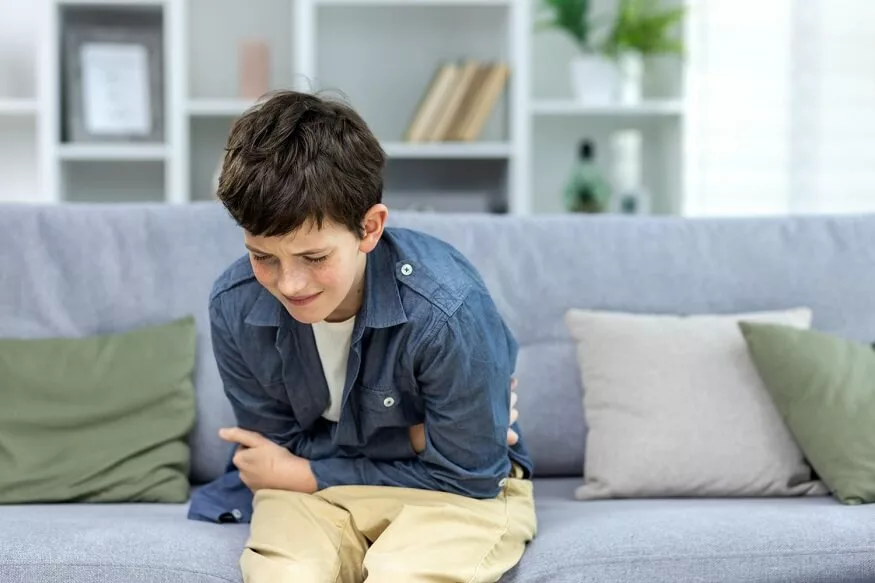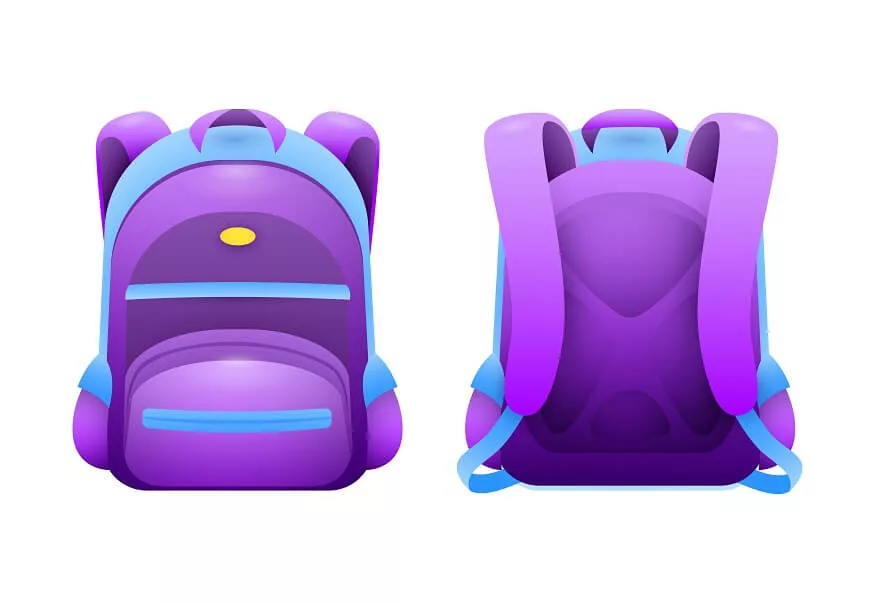Urinary Tract Infections in Children are a common but frequently misunderstood health concern. Understanding the causes, detecting symptoms, and starting effective treatment are critical to supporting child health. In this blog, we will learn about what is urinary tract infection, urinary tract treatment, medicine and urinary tract infection symptoms.
Urinary Tract Infection Causes:
● Incomplete Emptying of the Bladder:
One primary cause of UTIs in children is incomplete emptying of the bladder. Kids may not fully empty their bladders during urination, creating an environment conducive to bacterial growth. This can be influenced by factors such as anxiety, distractions during bathroom breaks, or inadequate time allocated for toilet activities.
● Genetic Predisposition:
Some youngsters may be genetically predisposed to UTIs. If there may be a circle of relative’s history of recurrent UTIs or other urinary tract issues, it could imply a genetic component. Genetic elements can also influence the shape and characteristics of the urinary tract, making some kids extra prone to infections.
● Abnormalities:
Structural abnormalities in the urinary tract can contribute to the development of UTIs. These abnormalities may be present from delivery or may result from other conditions. Examples consist of vesicoureteral reflux (VUR), where urine flows backward from the bladder into the ureters, increasing the chance of bacterial contamination in the kidneys.
● Poor Toilet Hygiene:
Inadequate toilet hygiene practices can facilitate the entry of bacteria into the urethra, leading to UTIs. Children may not be thorough in wiping, or they will wipe from the back to the front, inadvertently introducing bacteria from the anal region into the urethra. Education on the right hygiene practices is crucial for stopping these infections.
● Dysfunction:
Some children may additionally have voided dysfunction, a situation where the regular coordination of the muscle tissue involved in urination is disrupted. This disorder can result in incomplete bladder emptying and an extended chance of UTIs.
● Sexual Abuse:
In instances of sexual abuse, children might also increase UTIs because of the advent of bacteria into the urinary tract. Parents and healthcare’s need to be vigilant and recollect this possibility, especially if there are other signs of abuse.
● Urinary Tract Anomalies:
Anomalies in the shape of the urinary tract, inclusive of urethral abnormalities or ureteral malformations, can create situations that make it less difficult for bacteria to motive infections. Regular pediatric look and imaging studies can help identify and deal with those issues.
● Functional Voiding Disorders:
Functional voiding disorders involve abnormal patterns of urination, such as holding urine for extended periods or difficulty relaxing the pelvic muscles during urination. These patterns can contribute to UTIs by allowing bacteria to proliferate in the stagnant urine.
● Urinary Retention:
In some instances, children may feel urinary retention, where they battle to absolutely empty their bladders. This can arise due to numerous reasons, which include neurological troubles or obstructions inside the urinary tract and will increase the danger of UTIs.
● Dehydration:
Insufficient fluid intake can result in focused urine, growing an environment wherein bacteria can thrive. Dehydration reduces the frequency of urination, allowing bacteria to remain inside the urinary tract for longer periods.
● Bubble Baths and Harsh Soaps:
Certain hygiene practices, which include using bubble baths or harsh soaps, can worsen the genital region and disrupt the natural stability of bacteria. This could make the urinary tract more prone to infections.
● Foreign Bodies:
Introducing foreign bodies into the genital area, such as inserting objects into the urethra, can lead to UTIs. Children may not fully understand the consequences of such actions, emphasizing the importance of open communication and education about appropriate behaviors.
Also Read: Easy, Healthy And Delicious Desserts For Kids
Urinary Tract Infection Treatment:
Here are some urinary tract infection medicines for urinary tract infection treatment.
● Pain Relief:
One of the best urinary tract infection treatments is to alleviate discomfort at some stage in urination and abdominal aches associated with UTIs, healthcare providers may also advise over-the-counter ache relievers or urinary tract infection medicine such as acetaminophen or ibuprofen. It is critical to observe the dosage commands furnished by the healthcare expert.
● Medical Monitoring:
Regular observe-up appointments with a healthcare company are essential to reveal the child’s progress and ensure that the infection is responding to remedy.
● Hydration:
Encouraging an intake of liquid is important in encouraging the flushing out of bacteria from the urinary tract. Water is the best choice, and parents should ensure that their child drinks enough water throughout the day.
● Rest and Comfort:
Rest is crucial for the body to heal. Children with UTIs may experience fatigue, so ensuring they get sufficient sleep and rest is essential for a speedy recovery.
● Proper Nutrition:
A balanced and nutritious diet supports the child’s overall health and immune system.
● Avoiding Irritants:
Discouraging the use of harsh soaps, bubble baths, and other potential irritants in the genital area is important. These substances can disrupt the natural balance of bacteria and contribute to UTI recurrence.
● Hygiene Education:
Another major urinary tract infection treatment is to teach children proper toilet hygiene, including thorough wiping techniques. Emphasize the importance of wiping from front to back to prevent the introduction of bacteria into the urethra.
● Timely Toilet Breaks:
Encourage regular bathroom breaks, especially after activities like swimming. Prompt voiding helps prevent the accumulation of bacteria in the urinary tract.
● Addressing Constipation:
Manage constipation through a fibre-rich diet, increased water intake, and age-appropriate interventions. Regular bowel movements help prevent pressure on the urinary tract.
Also Read: Home Alone Safety: Guidelines for When Kids Are on Their Own
Urinary Tract Infection Symptoms :
Here are some important points about urinary tract infection symptoms
● Frequent and Urgent Urination:
One of the primary symptoms of a UTI in children is frequent urination. This increased urgency can be a key symptom parents should observe.
● Pain or Discomfort During Urination:
Children with UTIs often experience pain or discomfort while urinating. This can manifest as complaints of burning or stinging sensations during the act of urination. Younger children may not be able to articulate the sensation accurately but may exhibit signs of distress.
● Lower Abdominal Pain:
UTIs can cause discomfort or pain in the lower abdomen. Children may express this as general abdominal pain or discomfort, and younger kids might communicate it through increased fussiness or irritability.
● Fever:
A sudden onset of unexplained fever can be a significant sign of urinary tract infection. The body’s response to infection includes an elevated temperature. Parents should monitor for fevers that are not associated with other apparent illnesses.
● Changes in Urine Colour and Odour:
Changes in the appearance of urine can be indicative of a UTI. Parents should be aware of any bad or strong smell emanating from their child’s urine.
● Bedwetting or Daytime Accidents:
Regression in bladder control is a notable urinary tract infection symptom in children with UTIs. Children who were previously toilet trained may experience bedwetting, even after being dry at night for an extended period. Daytime accidents, including instances of not making it to the bathroom in time, can also occur.
● Increased Thirst:
Children with UTIs may exhibit increased thirst. This heightened thirst is often a response to the body’s attempt to flush out the infection by increasing fluid intake. Parents should observe any significant changes in their child’s drinking habits.
● Pelvic Pain or Discomfort:
In older children, especially adolescents, UTIs can cause pelvic pain or discomfort. This may be more specific than general abdominal pain and may be localized in the pelvic region.
Also Read: What is Bedwetting: Causes and solutions for children
At EuroSchool, we understand the importance of Urinary Tract Infections in Children are a variety of health issues that require a thorough understanding, detection of signs and symptoms, and powerful treatment techniques. Parents can assist their kid’s health with the aid of monitoring signs and symptoms, seeking prompt scientific attention, and actively collaborating on preventative measures.










